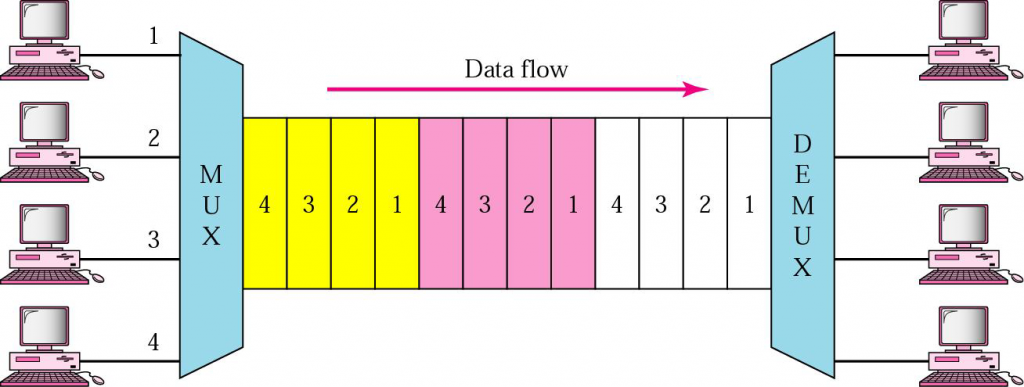TIME DIVISION MULTIPLEXING
Multiplexing is the process of transmitting several separate information channels over the same communication circuit simultaneously without interference. There are two types of multiplexing. In TDM several information channels are transmitted over the same communication circuit simultaneously using a time sharing technique. As an example PAM waveforms can be generated, that have a very low duty cycle. This means the single channel is transmitted. Most of the transmission time would be wasted. Instead this time is fully utilized by transmitting pulse other than PAM signals during the intervals. The first pulse is a synchronizing pulse with is used at the receiver in demultiplexing. The second pulse in amplitude modulated by channel 1.The third by channel 2 and the fourth by channel 3. This set up impulse is called a frame. The primary advantage of TDM is that several channels of information can be transmitted over a single cable of a single radio transmitter as any other communication circuit. Also any type of pulse modulator may be used in the TDM. In fact, many telephone systems are PCM-TDM.



